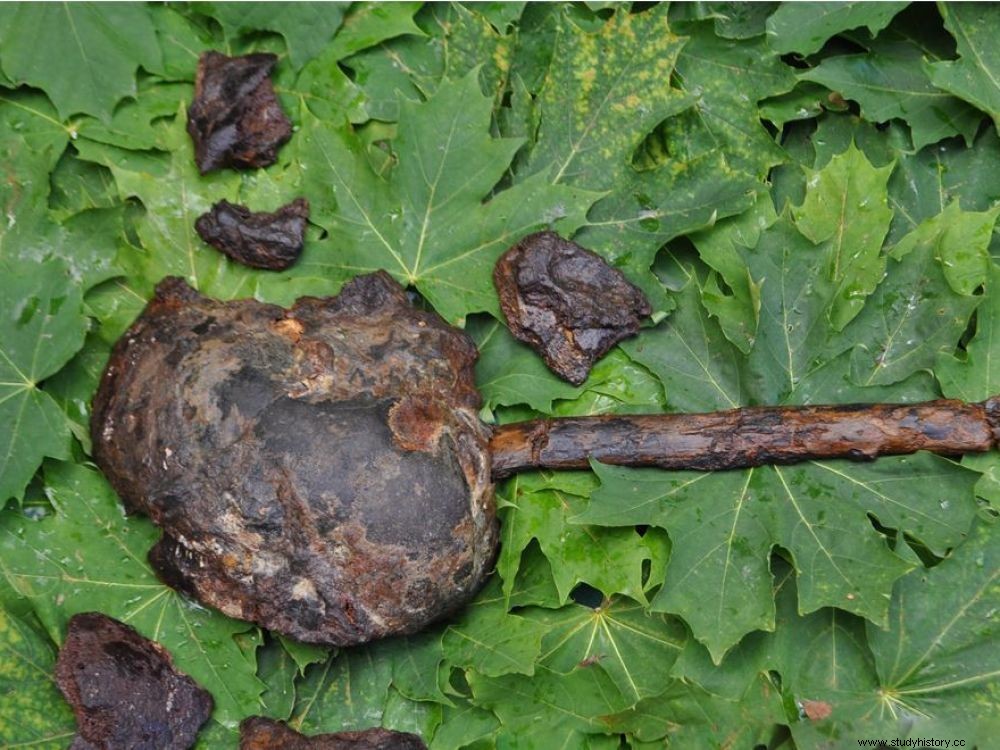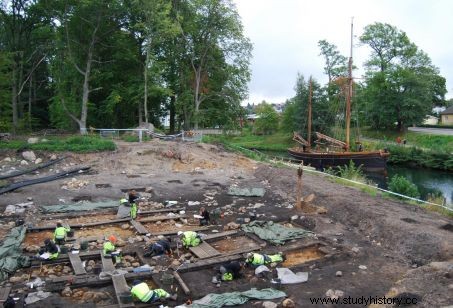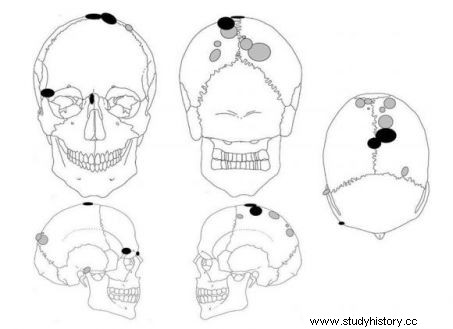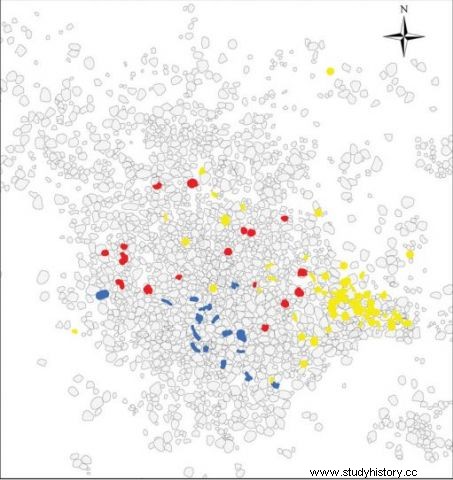8,000-year-old skulls bearing signs of abuse have been unearthed in central Sweden, revealing an unknown prehistoric ritual

This Mesolithic skull was found at the end of a stake at the site of Kanaljorden, Sweden.
Sinister discovery south of the 60° parallel! Impaled skulls have been unearthed in Sweden at the site of a lake that has now disappeared! 8000 years ago, in the region of the Motala Ström river, in the center-east of the current Scandinavian kingdom, on the site of Kanaljorden, astonishing ceremonies took place, as shown by a recent study published in the journal Antiquity . Between 2009 and 2013, the skulls bearing traces of brutality of a dozen people, as well as the skeleton of an infant, were extracted from an imposing artificial structure of twelve meters by fourteen, formerly located under water. Among them were those of nine adults, one of which still contained brain tissue. All appeared to have suffered cruel treatment.
The site of Kanaljorden, a former lagoon now transformed into a peat bog. Credits:Fredrik Hallgren
Most of the skulls bore traces of healed wounds in the same locations. This seems to point to repeated injuries, say researchers from the Osteoarchaeological Research Laboratory* at Stockholm University, who signed the article. When they were extracted, two of the skulls were still stuck on top of stakes. Like all the populations of Scandinavia in the Mesolithic period (-9000/-5000), they were probably nomadic groups of hunter-gatherers. Why did these individuals suffer such torture? Difficult to say, answer the specialists, this case being unprecedented in Europe for such ancient periods. The analysis of the thirty or so cranial remains collected has, however, made it possible to establish a few observations. "There are differences in treatment between women and men" , observe the scientists. On the two skulls of women identified, the marks of violence made with blunt objects were rather located at the back of the skull and on the right side, whereas for the men, the lesions were located on the top of the skull. skull or on the top of the face. Three male skulls also appear to have suffered postmortal abuse.
Location of traces of blows on the skulls of women (in grey) and men (in black). Credit:Osteoarchaeological Research Laboratory / Stockholm
The concentration of these cases in the same place makes anthropologists say that they could be ritual practices. This would tend to confirm the discovery of 400 piles, on which other skulls were perhaps stuck, but also of a fence around the monument. "Soon after death, or later, these skulls were brought to this small lake and placed in the water, on this structure of wood and stone" , say the researchers. This type of violence with repeated head trauma has already been reported in other parts of northern Europe, for skulls used as trophies, but in much more recent times.
The sunken structure of Kanaljorden, 8000 years ago. On the stone blocks, fragments of human skulls, some of which are impaled (red), bear bones (blue) and other remains of wild animals (yellow).
To add to the enigma of these rituals, Scandinavian researchers have unearthed various animal bones alongside the human deposits, including the jaws and limbs of brown bears, deer and badgers intentionally placed there. Over the millennia, the ancient lake has turned into a bog, protecting the remains from permanent disappearance.
*Osteoarchaeological Research Laboratory



